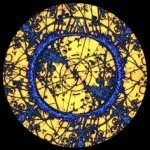
-
entries
31 -
comments
24 -
views
5,397
About this blog
I enjoy being a student at IHS and being able to take a lot of classes in the STEM areas. I like to problem solve and create solutions, following them through from design phase to hands on building. Encountering a challenge is rewarding to me, and I believe that is the main reason I picked this class. I also have always been fascinated by concept of putting numbers to nature since I was a kid. To me, physics is like taking a big mess and then breaking it up piece by piece to understand it and bring some order to natural behaviors. That is not to say everything can be, with 100% certainty, explained in the present. After all, there is still theoretical physics and these points of points of possibility can be just as, if not more, exciting.
I look forward to reading all the other posts on here and the topics you guys choose.
-ThePeculiarParticle

